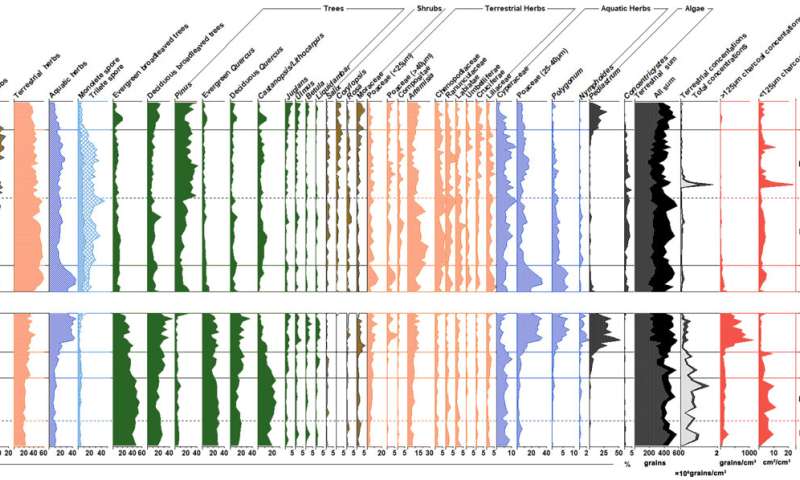Middle-late Holocene vegetation history, climate change and human activity in eastern China revealed

In a paper published in Science China Earth Sciences, a new study based on the sediment core from Lake Chaohu in the middle and lower reaches of Yangtze River presents the evolution histories of vegetation, climate, human activity and East Asian summer monsoon (EASM) over the past 5100 years in eastern China, and reveals their possible driving mechanisms.
This study was developed by a team of Prof. Xiayun Xiao (Nanjing Institute of Geography and Limnology, Chinese Academy of Sciences).
Based on a well-dated, high-resolution sediment core from the Chaohu Lake area in the middle and lower reaches of the Yangtze River (MLYR), eastern China, the team analyzed pollen and charcoal proxies, magnetic susceptibility (χlf), median grain size and TP, and gained interesting insights into the region's climate, vegetation, and human activities.
1) A sedimentary hiatus between 2080 and 730 cal. yr BP was first observed in the western part of Lake Chaohu, which is common in other lakes in the MLYR. The hiatus was likely caused by low lake water levels, substantial elevation differences, and a strong connection between the Yangtze River and Chaohu Lake.
2) Changing forest landscapes over the past 5100 cal. yr BP: From 5100 to 3650 cal. yr BP, evergreen and deciduous broadleaved mixed forests thrived, indicative of relatively warm and humid climatic conditions. After 3650 cal. yr BP, the forests gradually receded and were replaced by secondary Pinus forest after at least 730 cal. yr BP, indicating significant ecological shifts.
3) Human impact on the Landscape: Intense agricultural activities and vegetation clearance are first detected at 2520 cal. yr BP. Human settlements expanded from the lake front wetlands (during the period 2520–2080 cal. yr BP) to remote high-altitude areas (2080–400 cal. yr BP), and then returned to the lake front to reclaim the wetlands and lake (after 400 cal. yr BP).
4) A gradual trend of recessional EASM strength from 4300 cal. yr BP is mainly controlled by the reduction of summer insolation and a significant southward shift of the ITCZ.
These remarkable findings offer a comprehensive understanding of the intricate relationship between climate variations and human influence along the Yangtze River. As we grapple with modern-day environmental challenges, these lessons from the middle-late Holocene hold immense value for shaping sustainable resource management practices in the present and future.
More information:
Rui Ke et al, Middle-late Holocene environment change induced by climate and human based on multi-proxy records from the middle and lower reaches of Yangtze River, eastern China, Science China Earth Sciences (2023). DOI: 10.1007/s11430-022-1101-2
Provided by Science China Press